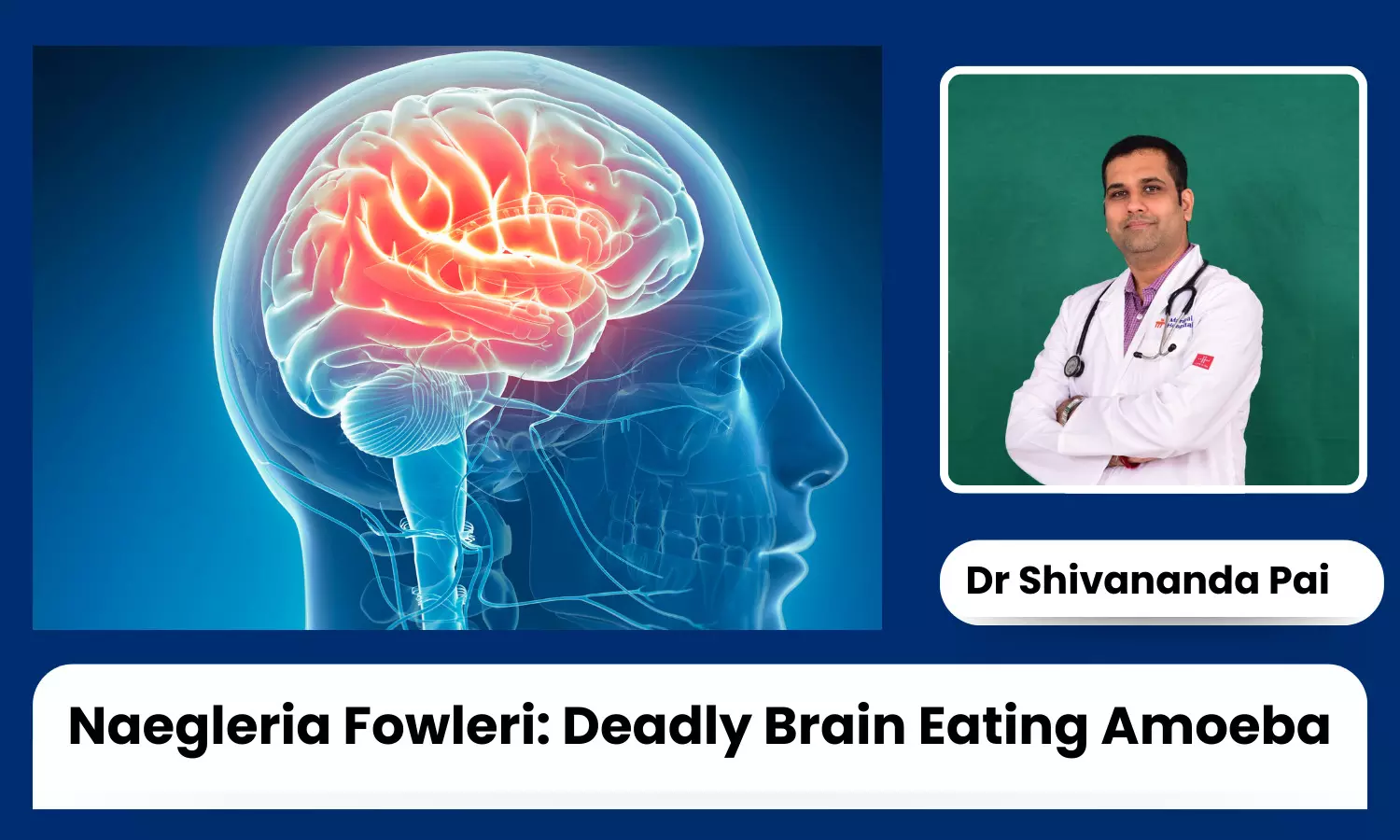Naegleria Fowleri: How the Deadly Brain-Eating Amoeba Infects Humans - Dr Shivananda Pai

These infections require public awareness and understanding to mitigate their impact. Naegleria fowleri, often dubbed the "brain-eating amoeba," is a single-celled organism found in warm freshwater environments such as lakes, rivers, hot springs, and poorly maintained swimming pools. This organism is quite dangerous to human health, particularly in the sweltering summer months, when people are more prone to be active in the water.
Nature and Habitat of Naegleria Fowleri
Naegleria fowleri thrives in warm freshwater environments, proliferating particularly during the summer when water temperatures rise. This amoeba can be found in natural water bodies, such as lakes and rivers, and man-made environments like hot springs and inadequately chlorinated swimming pools. The organism becomes a threat when contaminated water is forcefully inhaled through the nose, allowing the amoeba to enter the body and cause devastating infections.
Path of Infection
The infection begins when contaminated water enters the nasal passages during activities such as swimming, diving, or using a neti pot for nasal irrigation. Here is the typical path of infection:
Nasal Inhalation: The amoeba attaches to the mucous membranes of the nasal cavity upon contact.
Olfactory Nerve: The organism then migrates along the olfactory nerve, which is responsible for the sense of smell. There is a direct route to the brain via this neuron.
Brain Invasion: Once in the brain, Naegleria fowleri begins to destroy brain tissue, leading to a condition known as primary amoebic meningoencephalitis (PAM).
Symptoms and Diagnosis
PAM symptoms can include the following and usually manifest one to nine days following exposure:
- Severe headache
- Fever
- Nausea and vomiting
- Stiff neck
- Confusion
- Lack of attention
- Loss of balance
- Seizures
- Hallucinations
Rapid illness progression frequently results in mortality five days after the onset of symptoms. Because PAM is uncommon, and its symptoms are similar to those of bacterial meningitis, diagnosing it can be difficult. A definitive diagnosis is usually confirmed through the examination of cerebrospinal fluid (CSF), where the presence of the amoeba can be detected.
Treatment and Prognosis
The prognosis for PAM is generally poor, with a fatality rate of over 97. However, early diagnosis and treatment can improve the chances of survival. Supportive care in an intensive care unit is also crucial to managing the patient's condition.
Prevention
Prevention is key because there are few treatment options and a high death rate. Key preventive measures include:
Avoid Warm Freshwater: Avoid swimming in warm freshwater areas, particularly in the summer when amoeba activity is higher.
Use Nose Clips: To keep water from getting into your nasal passages when swimming in possibly contaminated water, use nose clips.
Avoid Stirring Up Sediment: Refrain from disturbing the sediment that may be the amoeba's home at the bottom of lakes and rivers when participating in water activities.
Proper Pool Maintenance: Ensure that swimming pools and hot tubs are properly chlorinated and maintained to prevent contamination.
Use Sterile Water for Nasal Irrigation: When using devices like neti pots, always use sterile or distilled water to avoid introducing the amoeba into the nasal passages.
Public Awareness and Education
It is imperative to increase public knowledge regarding amoebic brain infections and Naegleria fowleri. Education programmes have to concentrate on educating people about the circumstances that facilitate amoeba growth and the significance of taking precautions. Additionally, healthcare professionals should be trained to recognize the symptoms of PAM promptly to facilitate early diagnosis and treatment.
Amoebic infections of the brain caused by Naegleria fowleri, though rare, are almost universally fatal. The best strategies for lowering the risk of infection are public awareness campaigns and preventative actions.
By understanding how the amoeba enters the brain and taking appropriate precautions, individuals can significantly lower their chances of contracting this deadly disease. Increasing awareness and education about Naegleria fowleri can save lives by promoting safe practices around water and encouraging early medical intervention when symptoms arise.


